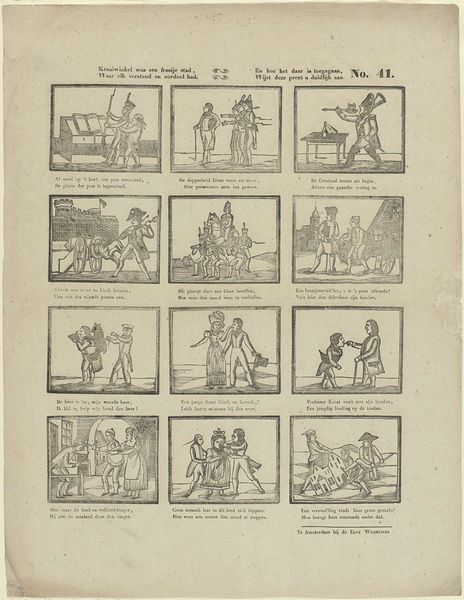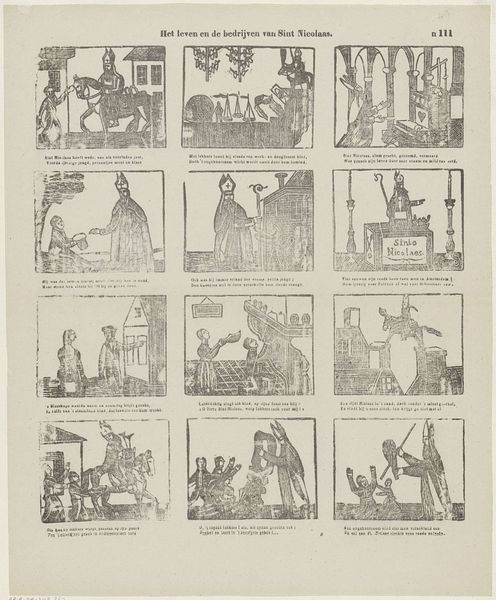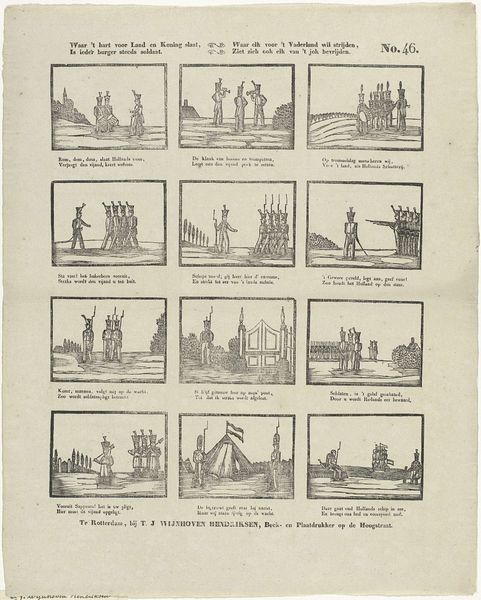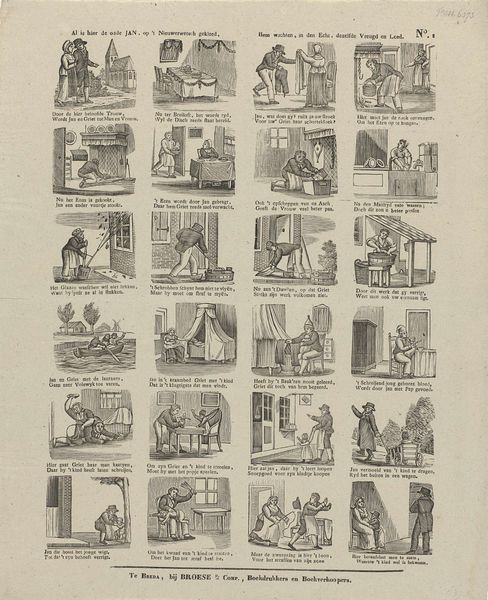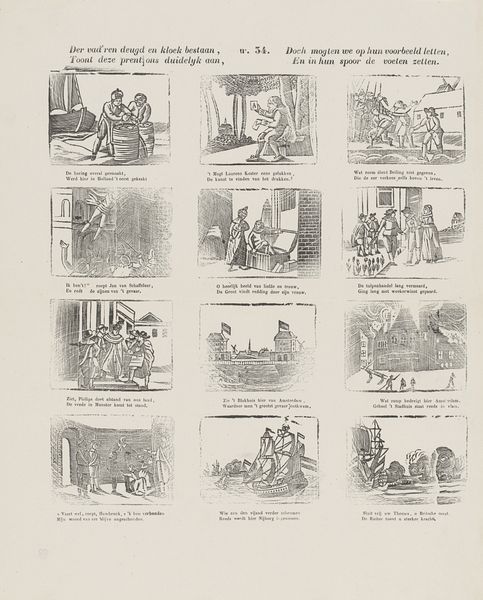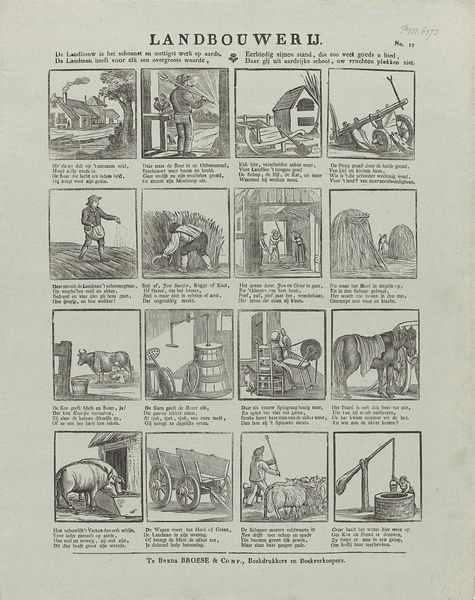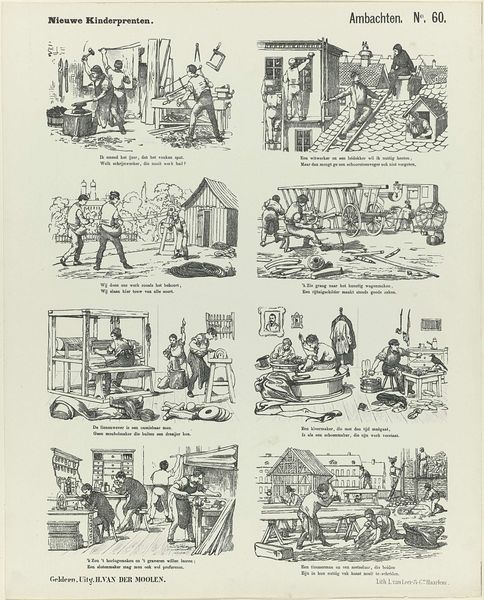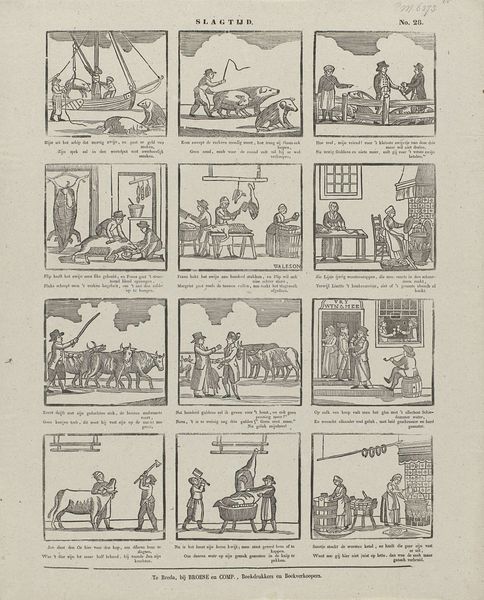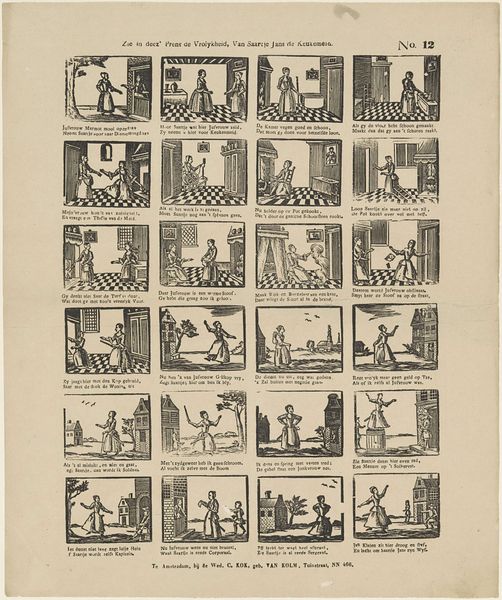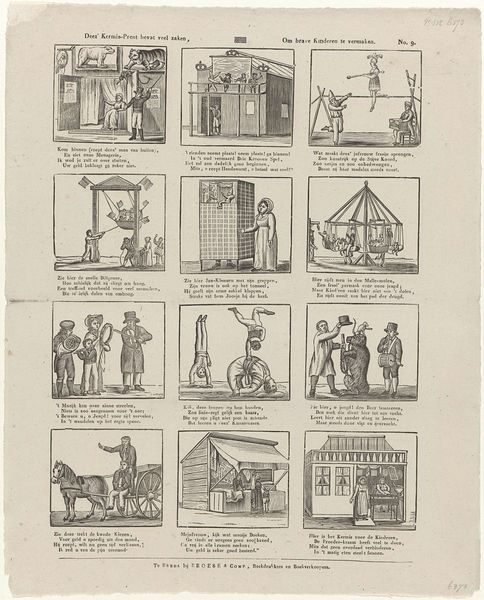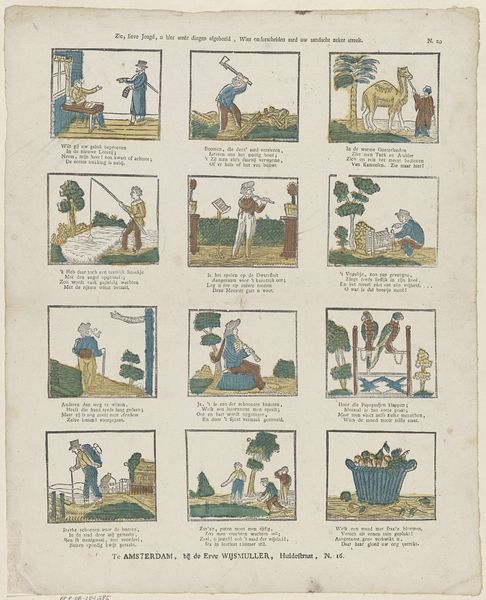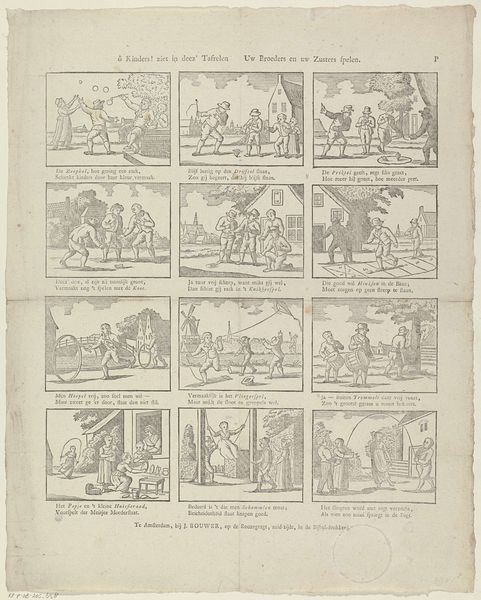
Zie, lieve jeugd, u hier weêr dingen afgebeeld, / Wier onderscheiden aard uw aandacht zeker streelt c. 1822 - 1849
0:00
0:00
schalekampvandegrampel
Rijksmuseum
print, engraving
#
narrative-art
#
dutch-golden-age
# print
#
old engraving style
#
figuration
#
line
#
genre-painting
#
engraving
#
realism
Dimensions: height 419 mm, width 326 mm
Copyright: Rijks Museum: Open Domain
Curator: This is an interesting print produced circa 1822-1849 by Schalekamp & Van de Grampel, currently residing in the Rijksmuseum. The title translates to "See, dear youth, here are things depicted again / Whose distinct nature surely appeals to your attention." Editor: My first impression? It feels like a charming educational game! All these small, vignette-like scenes packed together, rendered in that old engraving style... there’s a whimsical sense of order here, almost like a sampler of life's little lessons. Curator: Exactly. Prints like these were common teaching tools, employing narrative and genre scenes to instill values. Each tableau, paired with didactic verses, served as a springboard for moral discussions within families and classrooms. Editor: And look at the imagery! You've got the tradesman, the hunt, exotic locales with camels... each evokes a certain idea. I wonder how children, or even adults, at the time interpreted the connection of parrot cages and scattered fruit? Perhaps some idea around careless use? Curator: The organization, or perhaps more accurately, juxtaposition of diverse elements would certainly have been quite deliberate in conveying layered ideas around morality and proper conduct, shaping both the observer and social values as it permeated everyday life. The very act of teaching with images can reflect institutional authority. Editor: It’s incredible how loaded each miniature scene becomes with symbolic meaning. It’s not just a representation; it's an entire narrative condensed into these small, digestible pieces. You see the man felling the trees. What's he building? Curator: It's possible, yes. Moreover, we must see it within its economic and social context as this print itself is participating in, even building, social frameworks. Its mass reproducibility and widespread distribution indicate that these educational and moralizing notions spread wide. Editor: This artwork really brings the visual culture of the early 19th century to life and reveals how we might understand symbolic communication between humans as continuous today, no matter the medium. Curator: Absolutely. It emphasizes art’s function within civic structures; the use of imagery isn’t merely decorative, but also a political practice aimed at shaping public life.
Comments
No comments
Be the first to comment and join the conversation on the ultimate creative platform.
